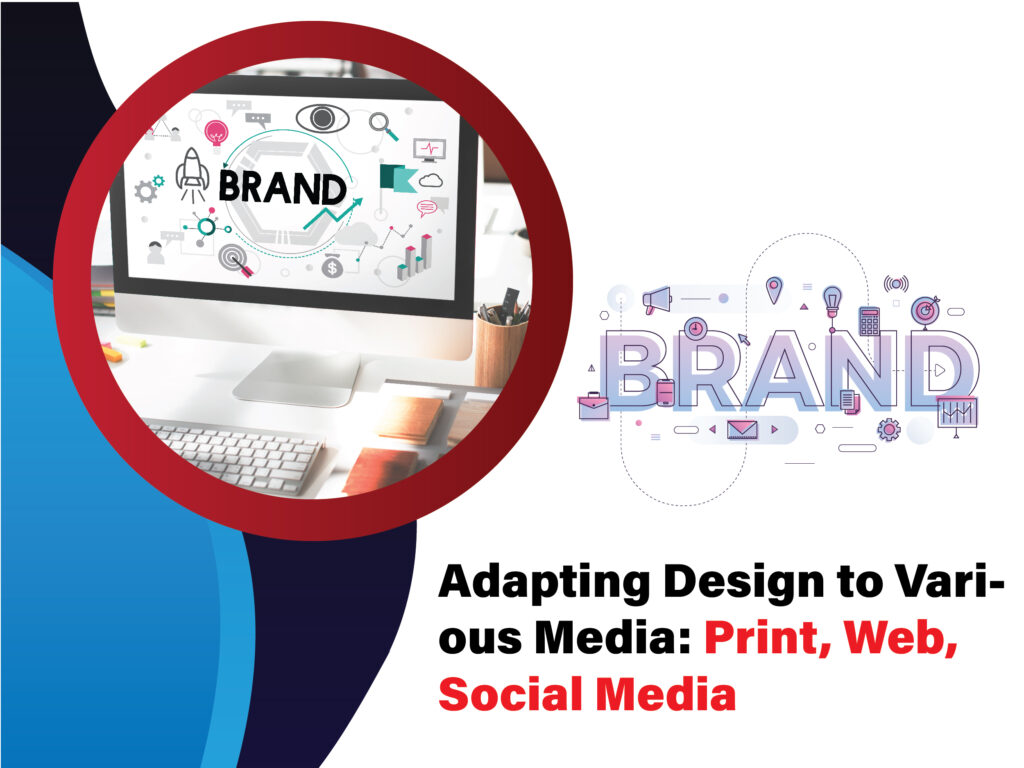Table of contents
- How to Design Consistent Brand Elements
- Developing a Visual Style Guide
- Implementing Consistency Across Platforms
- Adapting Design to Various Media: Print, Web, Social Media
- Conclusion
In today’s world, creating brand awareness is essential for the success of any business. A brand is a set of characteristics and attributes that distinguishes one company’s products or services from another’s. A strong brand can help build trust, loyalty, and recognition among customers. However, it’s not just enough to create a logo and call it a day. Consistency is crucial in developing a strong brand that resonates with customers.
The key to consistency is designing brand elements that work together cohesively. In this post, we’ll take a closer look at the importance of consistency in branding and how to design cohesive brand elements that make your brand more recognizable and memorable to customers.

Why is Consistency in Branding Important?
Consistency in branding is essential because it helps build trust and familiarity with your customers. If your brand elements are inconsistent or constantly changing, it can confuse and alienate your audience. Inconsistency can make it challenging for customers to recognize your brand and understand what you offer. Consistency also helps establish your brand’s identity and can differentiate it from your competitors.
Consistency is particularly important in today’s digital world, where customers are bombarded with countless logos and ads every day. It’s essential to create a consistent brand experience across all channels, including websites, social media, print materials, and packaging.
How to Design Consistent Brand Elements

Designing consistent brand elements is a process that requires careful planning and execution. Here are some essential steps to take when designing brand elements to ensure consistency:
- Define Your Brand Identity: The first step in designing consistent brand elements is defining your brand identity. Your brand identity includes your logo, typography, color palette, and other visual elements. Take the time to define your brand’s identity and ensure that all of your brand elements reflect this identity.
- Develop Brand Guidelines: Once you’ve defined your brand identity, develop brand guidelines that outline how to use your brand elements consistently across all channels. Include guidelines for logo usage, typography, color palette, imagery, and other visual elements.
- Use a Unified Design Style: To ensure consistency, use a unified design style across all channels. This means using the same typography, color palette, imagery, and other visual elements in all your brand materials, including your website, social media, print materials, and packaging.
- Use Consistent Messaging: Use consistent messaging across all communication channels, including your website, social media, print materials, and packaging. Your messaging should align with your brand identity and values.
- Test Your Brand Elements: Test your brand elements to ensure that they are effective and resonate with your target audience. This includes testing your logo, website, messaging, and other brand elements with focus groups and online surveys.
Developing a Visual Style Guide

The first step to developing a consistent brand is to create a visual style guide. This guide serves as a reference for all visual elements used in the brand communications. It lays out the rules for the logo design, color palette, typography, imagery, and tone of voice. The style guide ensures that all design elements are used in a consistent manner across all media to maintain brand recognition and recall.
The logo is the most recognizable element of a brand’s visual identity. It should be unique, memorable, and easily recognizable. The logo design should be consistent across all media and in various sizes. The style guide should define the minimum size of the logo for various applications and outline the clear space around the logo.
The color palette is another essential element to a brand’s visual identity. The colors used should be distinctive, memorable, and represent the brand’s personality. The style guide should define the primary and secondary colors, the color codes for the colors, and specify how to use these color combinations. The style guide should also detail the use of white space, and the correct proportions for using color blocks in designs.
The typography used in the brand’s design is equally important. Fonts have different personalities and can convey different meanings. The style guide should specify the font family, font size, and weight for different situations, like headings, body text, and captions. The font size and spacing must be consistent across all designs to ensure consistency.
Imagery is another critical element of a brand’s visual style. The imagery used should be relevant to the brand and its message and offer a clear understanding of the brand’s personality. The style guide should specify the guidelines for choosing images, such as the tone and theme of the images, the aspect ratio, and the image quality.
Implementing Consistency Across Platforms

With digital media and communication platforms like websites, social media, and email marketing, brands need to maintain a brand identity that is consistent across all these platforms. Since each platform has its unique style, tone, and design rules, adapting the visual style guide to each platform can be challenging. However, by embracing a strategic approach, brands can implement consistency across platforms and amplify their brand identity.
A good starting point would be to adapt the visual style guide to fit each platform’s design guidelines. The website requires a different design approach as compared to social media or email marketing. The visual elements used must be consistent with the brand style guide while also respecting the technical limitations of each platform.
Another way to maintain consistency is through the use of templates. Templates are pre-designed forms that can be used to produce consistent designs across all platforms. The templates should be designed to match the brand’s personality and style guide and should include the logo, color palette, and typography.
Adapting Design to Various Media: Print, Web, Social Media

Designing for print, web, and social media are different and unique challenges. Designers must adapt the brand identity to each medium without losing consistency in the brand’s personality. Print design requires a more immersive experience with the audience, while digital design needs to be easy to navigate and offer a seamless user experience.
Designing for print requires careful attention to detail. The colors used must be consistent with the brand’s visual style guide, and the typography must be legible. The use of white space and the layout of different elements must also be consistent.
Designing for the web involves dealing with various devices and browsers. It is essential to design for responsiveness to ensure that the website looks good on all devices. The typography used for web designs must be legible even at different sizes, and the color palette must be consistent across all device screens, whether mobile or desktop.
Designing for social media is a unique challenge due to the different platforms and the need to stay current and engaging. The use of visuals is crucial to catch the attention of the audience. The imagery must be relevant and of high quality. The typography must be easy to read, and the use of the brand’s color palette must be consistent.
Conclusion
Designing a consistent brand personality is essential to create a memorable and engaging brand identity. It is this personality that communicates the brand’s essence and values to its audience. Consistency is key in creating a strong impression of the brand in the minds of the audience. By embracing a strategic approach, brands can implement consistency across multiple platforms. The use of a visual style guide and templates can help maintain consistency across different media types, print, web, and social media. By adapting designs to the different media, designers can ensure that the brand’s message and personality remain consistent, no matter the medium.



